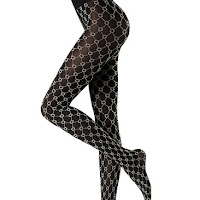Ask The Expert: Your hosiery questions answered!
03:43:00


Tights or bare legs? Summer's most perplexing question There used to be strict, if unspoken, rules about whether it...

As the summer season sets in, most women start digging in their wardrobe to find out their shorts and bikinis so t...

If you are anything like me then finding the right pair of tights is not as simple as it sounds. And many a siz...

Today I want to talk about one of the trends that is liking more and more women, and it is about net stockings, grid or ...

In theory, tights are not complicated. Throw them on under a dress or skirt, and you’ve winterised your outfit. B...

Blazer: Stradivarius Boots / Botas: Zara Bag / Bolso: Michael Kors Shirt / Camisa: Zara (old) Earrings ...

dress - ONLY pins - CCC martasiwik.blogspot.com

Coat - Love Republic Jumper - Pull and Bear Bag and Boots - Mango Skirt and glasses - H & M olg...
How do you get your inspiration for the outfits you wear? I got my inspiration from the ’90s. From video clips, movies and the grung...


An analysis of school uniform policies across England has shown an increasing number of secondaries are moving toward...

What a wonderful way to promote the message of being body positive. I admire these gir...

Indestructible ‘rip-proof’ tights now exist and they promise FIFTY ladder-free wears… but they don’t come cheap Start...

Busting The Myth: How To Wear Nude Tights Where to get the best nude tights on the market (and why they're so great) ...

With a cold winter well and truly on its way, we're looking at ways we can layer up and still look chic all season l...

It’s here and it’s ready to buy! We have added new styles to the amazing Oroblu Tights Autumn Winter 2018 collection and,...

To wear or not to wear sandals with tights. That’s the question many of you may be asking yourself as you get ready for the ...

Legs rock! We celebrate the return of tights to the catwalk. Fashion designers and stylists didn’t seem to be into weari...



2 comments
Regarding which hosiery brands will last the longest, I'd include Kunert there as well. Satin Look 20 and 40 denier, Leg Control 40 den, and the run resistant Chinchillan 20 den are highly recommended. Vogue's Golden Beauty 30 den and Soft Touch 40 den are good as well. All of them are also very comfortable. In fact, Kunert's Leg Control are the most comfortable support pantyhose I've ever used.
ReplyDeleteI was watching an old movie tonight, "Born to Dance" from 1936. The chorus girls were all wearing short, shorts with seamed hosiery (as they all did in those movies). It occurred to me that they couldn't be panty hose as they weren't invented until 1959...so what was it those women were wearing back then?
ReplyDelete